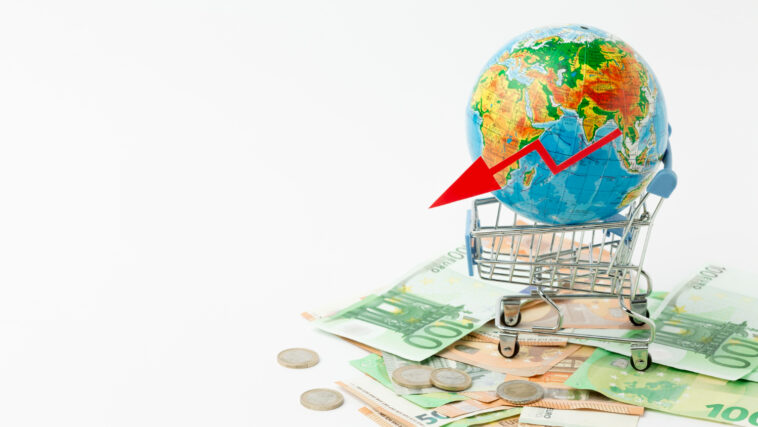As someone deeply engrossed in the world of finance and economics, I often find myself caught in discussions about the ever-fluctuating economic climate. One thing is clear: the terms “inflation” and “deflation” are no strangers to these conversations. These economic phenomena are not just textbook terms but have real-world implications on our daily lives, our spending, and our future plans. So, let’s delve deep into understanding these twin tides and how they can shape the contours of an economy.
Understanding Inflation
Inflation is like that gradual tide that brings the water levels up, but in this context, it refers to the rising prices of goods and services in an economy over a specified period. It’s when the burger you loved munching on suddenly costs a few cents or even dollars more or when the rent of your apartment takes an upward hike.
What Drives Inflation?
1. Demand-Pull Inflation:
This occurs when there’s a surge in the demand for products and services, but supply remains consistent. Think of it as many people chasing a limited number of goods, pushing prices up.
2. Cost-Push Inflation:
Here, external factors, such as a rise in production costs or raw material prices, lead to increased product prices. A classic example is when oil prices spike, leading to a rise in transportation costs and subsequently, product prices.
3. Built-In Inflation:
This results from the wage-price cycle. Higher wages lead to increased disposable income, and subsequently higher demand. If supply doesn’t match up, prices go up, causing inflation.
Decoding Deflation
Deflation is the ebb in this tide analogy, symbolizing falling prices of goods and services in an economy over time. It might sound like a shopper’s paradise initially — who wouldn’t want their favorite products at lower prices? However, sustained deflation can have deeper implications.
Why Does Deflation Occur?
1. Reduced Consumer Spending:
If people and businesses start believing that prices will continue to drop, they delay purchases. This decreased demand can lead to a surplus, prompting businesses to reduce prices further, creating a vicious cycle.
2. Overproduction:
If industries produce more than what’s consumed, it leads to a glut in the market, pushing prices down.
3. Technological Advancements:
While innovation drives progress, rapid technological advancements can sometimes lead to cheaper production methods, leading to reduced product prices.
Implications on the Common Man
On the face of it, inflation means I’d pay more for a coffee or a car. Deflation might mean getting them cheaper. But there’s more:
Inflation:
The money in my pocket loses its purchasing power. Savings, especially those not earning an interest rate higher than the inflation rate, diminish in value. However, if wages rise with inflation, it might not seem that intimidating.
Deflation:
While products get cheaper, the real value of debt increases. Imagine still paying off a hefty loan for a house whose value has now plummeted due to deflation. Moreover, businesses often cut wages or lay off employees, leading to reduced consumer spending.
Steering Through the Tides
Both inflation and deflation can be challenging for an economy, but understanding them offers a way to navigate their waters. Governments and central banks worldwide have tools, like monetary policies, to keep these in check. For instance, during high inflation, central banks might increase interest rates to curb spending and borrowing, thus reducing demand and prices. Conversely, during deflation, they might slash rates to encourage spending.
Final Thoughts
Inflation and deflation are like the two sides of a coin, each with its own set of challenges and implications. As I sit back and sip my coffee, whose price might have been affected by inflationary pressures, I realize that these economic phenomena aren’t just theoretical. They shape our decisions, our lifestyle, and our future. By understanding and staying informed about them, we can make better, more informed choices, whether we’re dealing with personal finances or business decisions.


